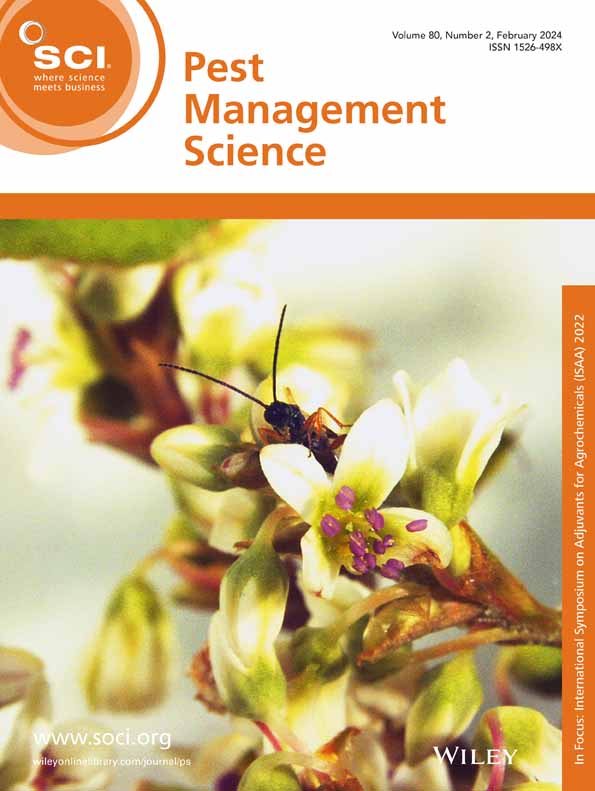植物次生代谢物:控制植物病毒的新机遇。
IF 3.8
1区 农林科学
Q1 AGRONOMY
引用次数: 0
摘要
植物病毒对全球农业构成重大威胁,造成大量产量损失和经济损失。传统的控制措施,如化学疗法,往往是无效的和对环境有害的,因此必须发展可持续的替代办法。植物次生代谢物,包括生物碱、酚类、类黄酮和三萜,由于其多样的结构和有效的抗病毒活性,已成为植物病毒管理的有希望的候选者。在此,我们全面总结了202种植物次生代谢物,重点介绍了它们的作用机制,如抑制病毒复制、干扰病毒运动和诱导植物免疫反应。值得注意的代谢物,包括安托芬、槲皮素和熊果酸,已显示出显著的抗病毒功效,通常超过宁南霉素等传统药物。然而,稳定性低、溶解度差、难以大规模生产等问题限制了其实际应用。为了应对这些挑战,植物病毒管理领域必须采用跨学科方法,以克服现有挑战并释放植物次生代谢物的全部潜力。这篇综述不仅试图巩固目前对植物次生代谢物的了解,而且为未来的研究和创新提供路线图,将这些天然化合物转化为实用的工具和生态友好的解决方案,以确保面对不断变化的病毒威胁的粮食安全。©2025化学工业协会。本文章由计算机程序翻译,如有差异,请以英文原文为准。
Plant secondary metabolites: new opportunity for controlling phytoviruses.
Phytoviruses pose a significant threat to global agriculture, causing substantial yield losses and economic damage. Traditional control measures, such as chemotherapeutics, are often ineffective and environmentally harmful, necessitating the development of sustainable alternatives. Plant secondary metabolites, including alkaloids, phenols, flavonoids, and triterpenes, have emerged as promising candidates for phytovirus management due to their diverse structures and potent antiviral activities. Herein, we present a comprehensive summary of 202 plant secondary metabolites, highlighting their mechanisms of action, such as inhibition of viral replication, interference with viral movement, and induction of plant immune responses. Notable metabolites, including antofine, quercetin, and ursolic acid, have demonstrated significant antiviral efficacy, often surpassing that of conventional agents like Ningnanmycin. However, challenges such as low stability, poor solubility, and difficulties in large-scale production limit their practical application. To address these challenges, the field of phytovirus management must embrace interdisciplinary approaches to overcome existing challenges and unlock the full potential of plant secondary metabolites. This review tries to not only consolidate current knowledge on plant secondary metabolites but also provide a roadmap for future research and innovation to transform these natural compounds into practical tools and eco-friendly solutions, ensuring food security in the face of evolving viral threats. © 2025 Society of Chemical Industry.
求助全文
通过发布文献求助,成功后即可免费获取论文全文。
去求助
来源期刊

Pest Management Science
农林科学-昆虫学
CiteScore
7.90
自引率
9.80%
发文量
553
审稿时长
4.8 months
期刊介绍:
Pest Management Science is the international journal of research and development in crop protection and pest control. Since its launch in 1970, the journal has become the premier forum for papers on the discovery, application, and impact on the environment of products and strategies designed for pest management.
Published for SCI by John Wiley & Sons Ltd.
 求助内容:
求助内容: 应助结果提醒方式:
应助结果提醒方式:


